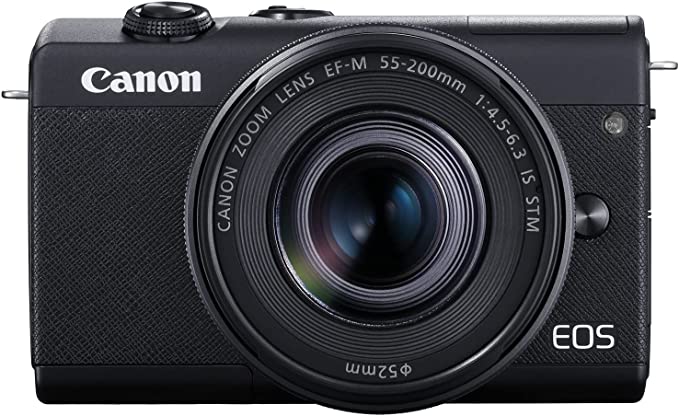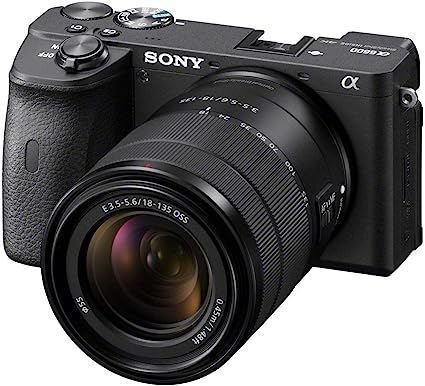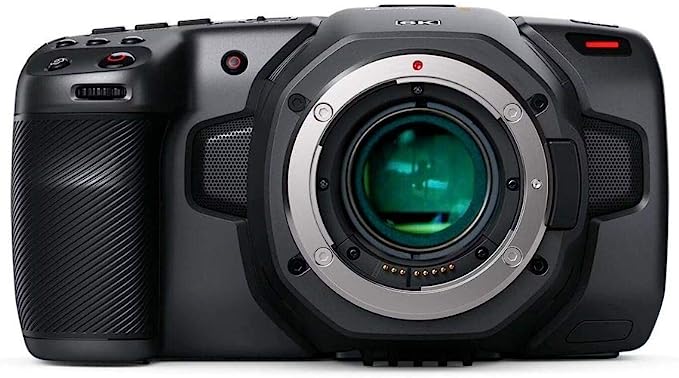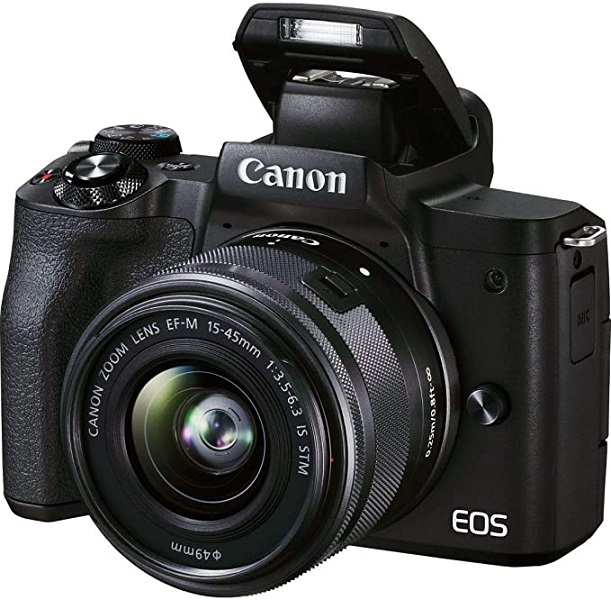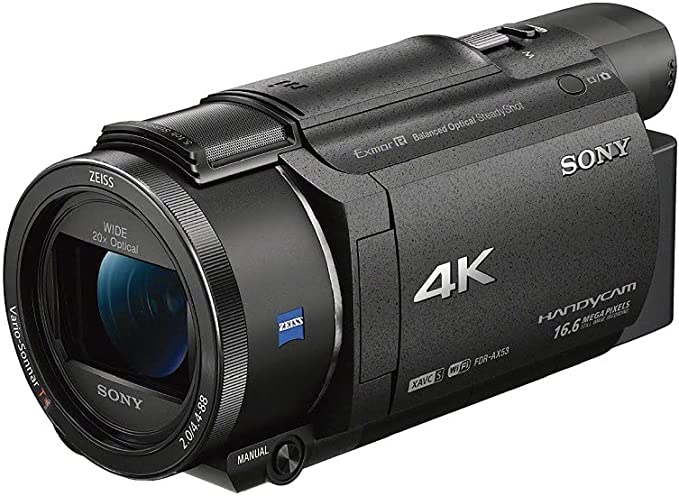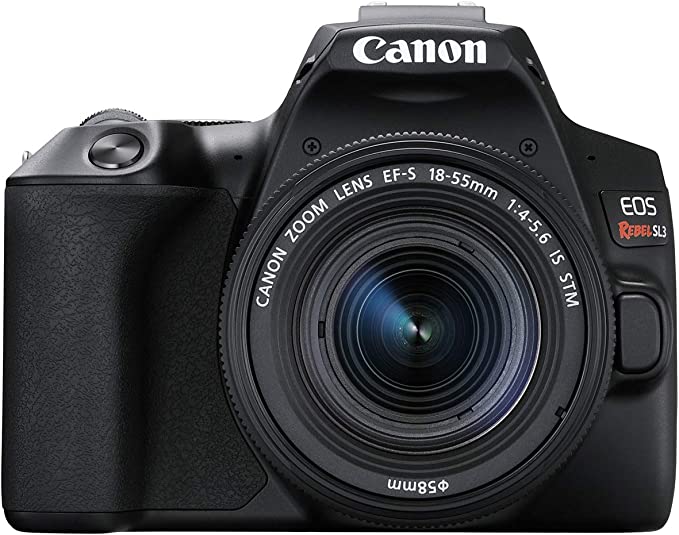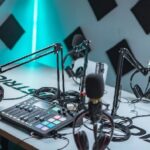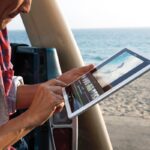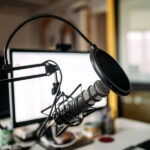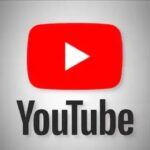10 Best Podcast Cameras in 2023
When putting together a podcast, in addition to the best AI tools for podcasting and the best podcast microphones, choosing a good camera can be decisive for the visual quality and success of the project. Currently, on the market, there is a wide variety of brands and models, ranging from compact and affordable cameras to high-quality professional models, after all, this is the most expensive equipment for a podcast. Therefore, in addition to delivering good quality, this acquisition needs to fit within your budget.
Among the most prominent camera models for use in podcasts, we can recommend these:
- Canon EOS M200 (the cheapest)
- Nikon D5300 (the best cost-benefit)
- Panasonic Lumix GH5 (the best design)
- Blackmagic 6K (the most expensive)
If you are looking for a camera with good image quality, ease of use, and connectivity, in this article you will find out about the 10 best podcast cameras, so we will help you find the camera that best suits your needs and your budget.
What should a good podcast camera have?
A good podcast camera needs to have connectivity options like HDMI, USB, or SDI. The camera should be simple to operate, allowing you to focus on the content of your podcast instead of worrying about setting up your equipment. A large battery and a large amount of memory are also great features for podcast cameras.
With these features, the camera won’t let you down in the middle of the recording process and will allow you to capture your most interesting ideas without worrying about running out of space or needing to change the battery frequently.
So, if you’re not looking for webcams for live streaming, but professional cameras, let’s explore the 10 best podcast cameras out there.
1. Canon EOS M200
Kicking off our list of the best podcast cameras is the Canon EOS M200, a camera geared towards podcasting that offers a host of advanced features. The 24.1 megapixel CMOS sensor offers high-resolution and high-quality images. The ISO adjustment option, ranging from 100 to 25600, allows recording in any type of lighting.
The EOS M200 is capable of recording videos in 4K at 24FPS and Full HD at 60FPS. It also supports vertical video and has built-in technologies like Wi-Fi and Bluetooth. The Canon EOS M200 is a very compact camera. This is possible thanks to the absence of mirrors. When a camera uses mirrors it ends up getting bigger and heavier.
The camera also features a Creative Filter Wizard that lets you change camera settings and see the results in real time. The Canon EOS M200 even features a Self Portrait feature that lets you make adjustments to brightness, background blur, skin tones, and more. The touchscreen can be tilted up to 180°. And to top it off, the Dual Pixel AF CMOS focusing technology provides fast and accurate focusing for videos, including eye recognition ability.
To stream a podcast you will need to have an excellent internet connection. So, make sure you have a fast and reliable connection, preferably fiber optics.
2. Panasonic Lumix FZ80
The Panasonic Lumix FZ80 is yet another option worth considering when it comes to podcasting. This camera’s ability to record 4K video at 30 fps with a 100 Mbps bitrate makes it an excellent choice for producing high-definition content for podcasts. In addition, it lets you switch between different resolutions, such as 1080p and 720p, all in MP4 format, giving you flexibility in choosing the image quality that best suits your content.
One of the things that makes the Lumix FZ80 special is the AVCHD compression option when recording at 1080p, which makes it possible to create content while keeping file sizes in check. However, it is worth mentioning that the autofocus (AF) of this camera is based on contrast detection, which means that its performance is optimized under good lighting conditions.
The Lumix FZ80 also impresses with its incredible 60x zoom capability, making it easy to capture details or create dramatic effects while recording your podcast. Furthermore, this camera offers fast AF and can capture RAW images at a rate of 10fps. The 4K/30fps recording feature allows you to create high-quality content. However, the camera does not have an electronic viewfinder and the rear LCD screen does not tilt, which can limit its use a little.
Discover also the 15 best video hosting websites and tools.
3. Sony Alpha A6600
The Sony Alpha A6600 is a top choice for podcasts thanks to its combination of picture quality, performance, and versatility. This camera comes equipped with an APS-C sensor and the ability to record 4K/30fps video, offering impressive resolution and fine detail for your podcast recordings. Its Real-time Tracking AF feature is a real revolution, providing a smooth transition from subject tracking to face and eye detection.
The Sony Alpha A6600 is a great choice for visual content creators because of its touchscreen which can be tilted up to 180 degrees. But this camera is not just limited to recording high-quality videos. It also comes with a microphone and headphone jack, allowing you to record high-quality audio to accompany your video recordings. With auto AF and auto exposure enabled, the camera can shoot pictures at a rate of 11fps.
One of the main attractions of the Sony Alpha A6600 is its FZ1000 Z-type battery, which allows for long recording sessions, a valuable quality for podcasters. Battery durability and longevity put it ahead of many other more expensive mirrorless cameras. In addition, the Alpha 6600 is equipped with a 24.2 MP Exmor CMOS image sensor and the latest Bionz X image processor. These technologies provide improvements in image quality and performance.
4. Blackmagic 6k
The Blackmagic 6K is a powerful camera used by top podcasters due to its high-end image quality and features. Equipped with a high-resolution Super 35 HDR sensor and dual native ISO, it delivers professional image quality. The EF Lens Mount is compatible with a wide variety of lenses, adapting to your needs.
A key strength of this camera is its adjustable HDR touchscreen, which provides an intuitive interface for settings and control. Built-in ND filters allow for good exposure control, while the larger-capacity battery prevents interruptions during podcast recordings.
Blackmagic 6K offers the possibility of recording videos with a resolution of up to 6144x3456p in 50fps. It also provides easier editing with the DaVinci Resolve Studio license and support for capturing Blackmagic Raw from the sensor. Another highlight is professional audio support, which includes a mini XLR input with +48V phantom power and four built-in microphones.
Want to put together a podcast but don’t have a lot of money? Get to know the things you need to buy for a cheap setup to do live streaming and podcasting.
5. Olympus Mark III
The Olympus Mark III is a powerful camera that offers a world of possibilities for podcasters. The Olympus Mark III offers the most effective image stabilization available, allowing you to capture incredibly sharp photos and videos without the need for tripods, ideal for podcast productions that demand portability and agility.
The Mark III is considered one of the best podcast cameras because it is packed with advanced features to help conquer the most challenging recording scenarios. It features a multi-selector joystick for quick AF area selection, and it is dust-proof and water and freeze-resistant, with weather-resistant magnesium alloy housing. Its ability to capture at 50 MP resolution, combined with continuous shooting at up to 60 FPS, makes it perfect for covering every moment of your podcast.
Regarding video performance, the Olympus Mark III does not disappoint. Equipped with a Micro Four Thirds sensor and lens mount, it is capable of recording in Full HD 120p for slow motion scenes, Full HD 1080p, and HD 720p. Its 5-axis image stabilization system ensures smooth and detailed videos, even when using a medium telephoto lens and the camera is hand-held.
6. Nikon D5300
The Nikon D5300 could not be missing from our list of the best podcast cameras either. It’s a high-end DSLR that’s extremely popular with professionals and certainly lives up to its reputation. With a 24.2MP sensor, the D5300 is the perfect tool for podcasters looking to take their footage to the next level. This camera is equipped with a DX-format CMOS sensor that delivers vibrant colors and accurate details.
This Nikon DSLR features the powerful EXPEED 4 CPU that delivers impressive speed and accuracy, ensuring you never experience lag while recording. With superior color reproduction and efficient noise reduction, the D5300 creates an enjoyable viewing experience for audiences. The camera also lets you adjust ISO sensitivity between 100 and 12,800, making it a versatile choice for different lighting conditions.
The Nikon D5300 is a quality choice for podcasts, not only for its shooting capabilities but also for its connectivity features. With built-in WiFi functionality, the D5300 allows for easy file sharing and remote camera control. Furthermore, it is capable of shooting in Full-HD at 1080/60fps, providing images with clarity and fluidity.
Discover these 12 Ways to make money with live streaming and podcasts.
7. Canon EOS M50 Mark II
The Canon EOS M50 Mark II has been making a name for itself as a great option for podcasts. Featuring a fully articulated touch screen and a 24 MP APS-C sensor, this camera is ideal for both beginners and experienced video creators alike. The manufacturer equipped the EOS M50 with its latest processor, the DIGIC 8, ensuring superior image processing. Despite some limitations in 4K recording (4K/24fps), this camera stands out with its expanded Dual Pixel AF coverage and various connectivity options.
Canon has managed to pack an impressive set of features into a compact body. One of the EOS M50’s strongest points is its precise viewfinder, which provides a clear, detailed view of what is being captured. The camera also comes with a 15-45mm lens, however, to get the most out of this camera it would be wise to invest in a more powerful lens.
For podcasters, Canon’s EOS M50 Mark II is an exceptionally versatile multimedia tool, with advanced features for both stills and video. Equipped with a 24.1 MP APS-C CMOS sensor and a DIGIC 8 image processor, the M50 Mark II supports UHD 4K video recording at 23.98 fps, Full HD 1080p60, and HD 720p120, making it ideal for slow motion capture. With enhancements to the speed and accuracy of Dual Pixel CMOS AF and Eye Detection and Face Detection focus modes, the M50 Mark II ensures subjects are always in focus.
8. Sony FDR-AX43
Continuing with our selection of the best podcast cameras, we have the Sony FDR-AX43, which is yet another professional option for podcasters looking to improve the quality of their recordings. With support for 4K (25fps) and 1080p (50fps) recording, as well as the ability to capture slow motion at up to 120 fps, this camera gives you plenty of options for capturing visual content. The camera comes with a non-replaceable Zeiss Vario Sonnar-T lens, with a maximum aperture of f/2.0 and a focal length ranging from 26.8 to 536mm, providing great versatility in image capture.
Another feature that makes the Sony FDR-AX43 particularly suitable for podcasting is its audio functionality. With three microphones built in for quality audio capture, the camera also offers dedicated microphone and headphone ports, allowing even more control over audio quality. Battery life is also impressive, supporting up to 235 minutes of non-stop recording, and the camera can even be used while charging, which is ideal for long podcast recording sessions.
The Sony FDR-AX43 is a high-performance 4K Handycam, featuring Balanced Optical SteadyShot and Fast Intelligent AF, ensuring accurate and high-quality images. The BIONZ X image processor, together with the Exmor R CMOS sensor, ensures superior image quality, while Wi-Fi and NFC connectivity add an added dimension of convenience and versatility.
9. Panasonic Lumix GH5
The Panasonic Lumix GH5 is a tool aimed at podcasters looking to improve the visual quality of their content. With its 20,3 megapixel sensor, which offers significantly more photoreceptor surface per pixel, the GH5 delivers an ultra-wide dynamic range. Its rugged, splash- and cold-resistant design makes it ideal for podcasts that may need to record in a variety of environments.
The GH5’s Anamorphic Video Model is an advantage for professional 4K video production. This interchangeable lens camera system allows for high performance, durability, and mobility, perfect for podcasts that require high-quality, immersive visual content. In addition, the camera body has multiple connectivity points and ports, including TC input/output terminal, a 3.5mm microphone port, a 3.5mm headphone port, a 2.5mm remote socket, an HDMI type A port, and a USB-C 3.1 port.
Panasonic’s Lumix GH5 is considered one of the best podcast cameras as it is a professional-grade mirrorless camera that offers over 29 compact LUMIX and LEICA lens options. The GH5S includes unlimited C4K recording, 14-bit RAW, native ISO, and Panasonic XLR microphone adapter support. Its 21mm, 0.76x high-resolution OLED viewfinder (3680K dot) allows images to be seen exactly as intended, even in direct sunlight.
Want to do well on your live streams? Then enjoy this article: how to do successful live streams: 21 tips for beginners.
10. Canon EOS Rebel SL3
Finishing off our list of podcast cameras, we present the Canon EOS Rebel SL3 which stands out as a camera perfectly suited for podcasts. It is equipped with a 24.1MP APS-C CMOS sensor and DIGIC 8 image processor, providing high resolution and reliable performance. The camera has UHD 4K video recording capability and an ISO range of 100-25600. The SL3 also incorporates Dual Pixel CMOS AF, which delivers fast, accurate, and smooth autofocus whether you’re recording video or capturing live stills. The camera even features a 3″ LCD touchscreen for intuitive control of settings and live view monitoring.
This Canon model has a wide focus area of approximately 88% horizontal and 100% vertical when working with compatible EF lenses. In addition, Eye Detection AF analyzes the image and automatically determines where to focus based on your subject’s eyes. This provides an extra degree of accuracy when capturing your podcast’s respondents.
The camera is also capable of recording 4K video at a rate of up to 24 frames per second, resulting in cinematic high-definition footage. The timelapse feature lets you create amazing 4K videos in a simple and straightforward way. Furthermore, the 4K frame cropping function allows you to extract still images from your video recordings without the need for additional software.
What is the best camera for podcasting?
The Nikon D5300 is considered the best camera for podcasting due to its high standard of quality and durability. With an impressive 24.2MP image quality, the D5300 is the perfect tool for podcasters looking to take their footage to the next level. This camera is equipped with a DX-format CMOS sensor that delivers vibrant colors and accurate details.
What cameras do podcasts use?
The cameras most used by video podcasts are the Nikon D5300, the Blackmagic 6K, and the Canon EOS M200. These cameras provide high-resolution video, advanced features, and autofocus tools that make recording a video podcast a much more professional task. The durability and quality of these cameras are also important factors.
What equipment to put together a podcast?
To put together a video podcast, or videocast, you’ll need a professional camera, good lighting, a good microphone, and headphones so that everyone can hear the audio in real-time. You will also need video editing software to edit your recordings and make cuts.
What technology is used in the podcast?
The streaming technology used in a video podcast depends on the platform used for the live broadcast. Some of the most common streaming platforms are YouTube Live, Twitch, and Facebook Live. They typically use RTMP (Real-Time Messaging Protocol) technology to allow live video and audio streaming over the internet.
